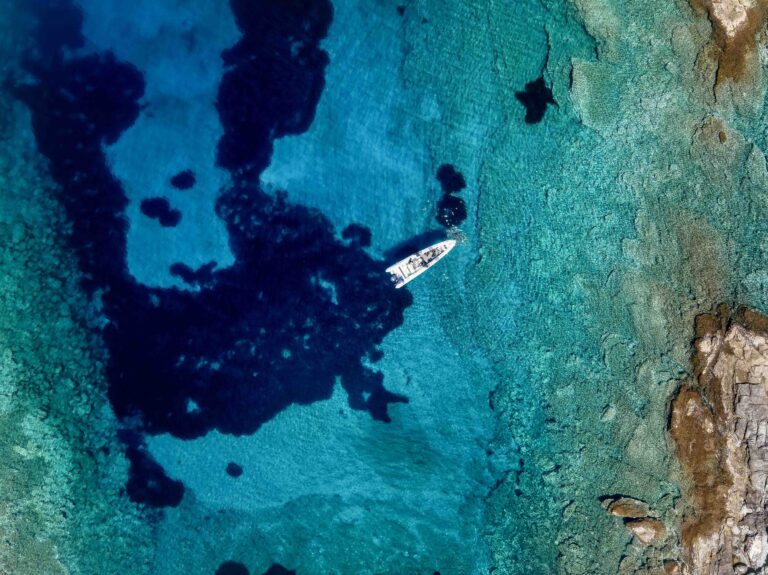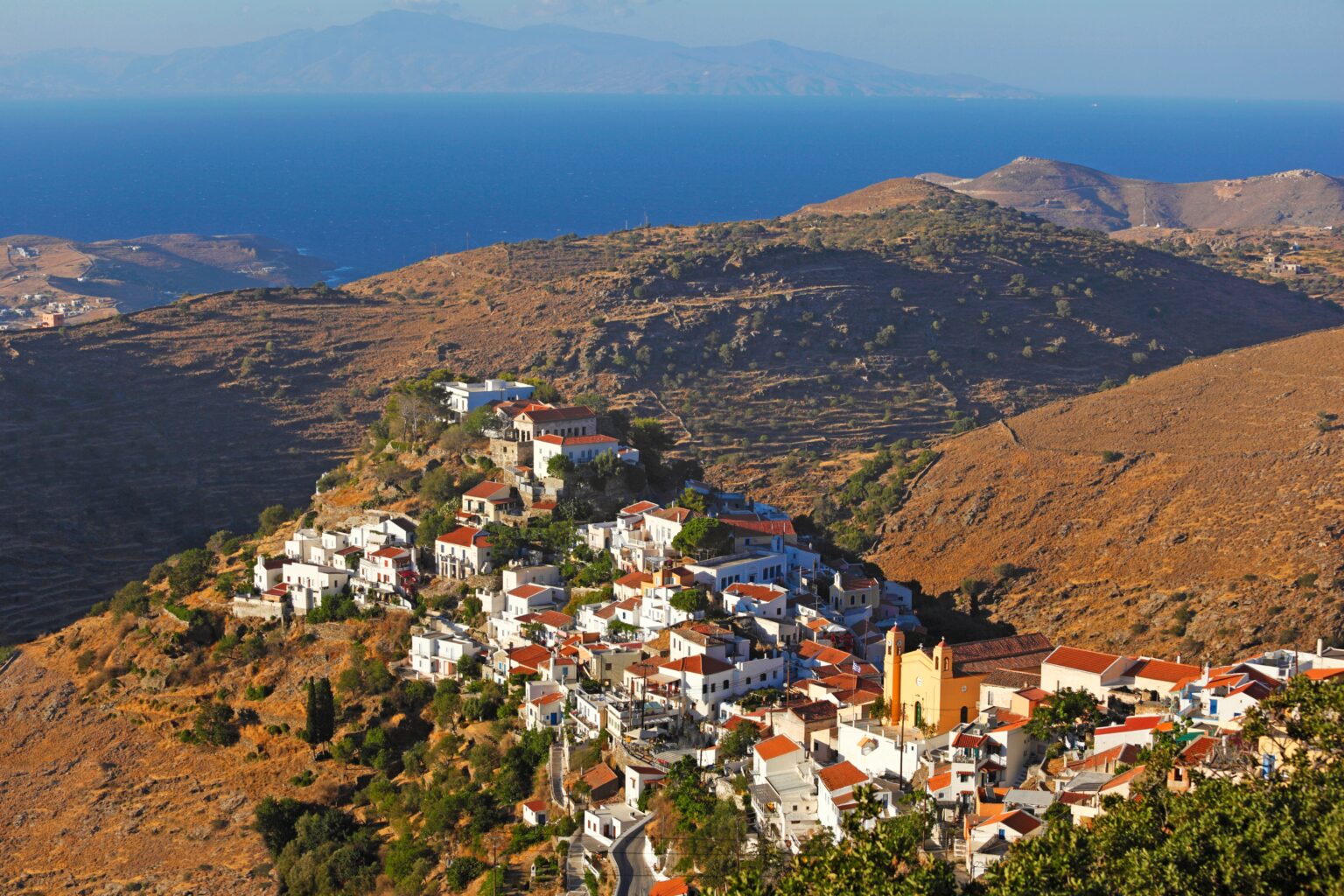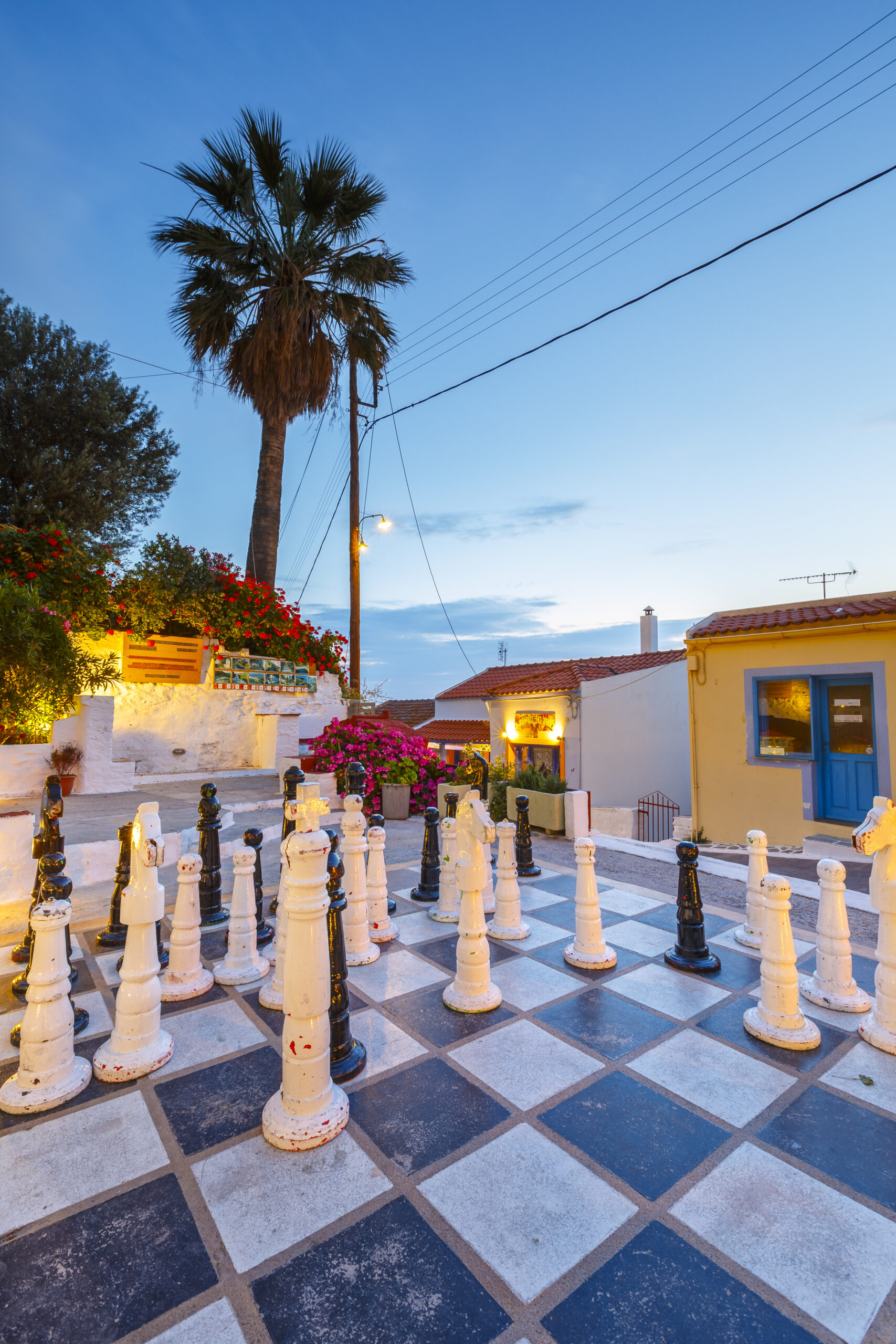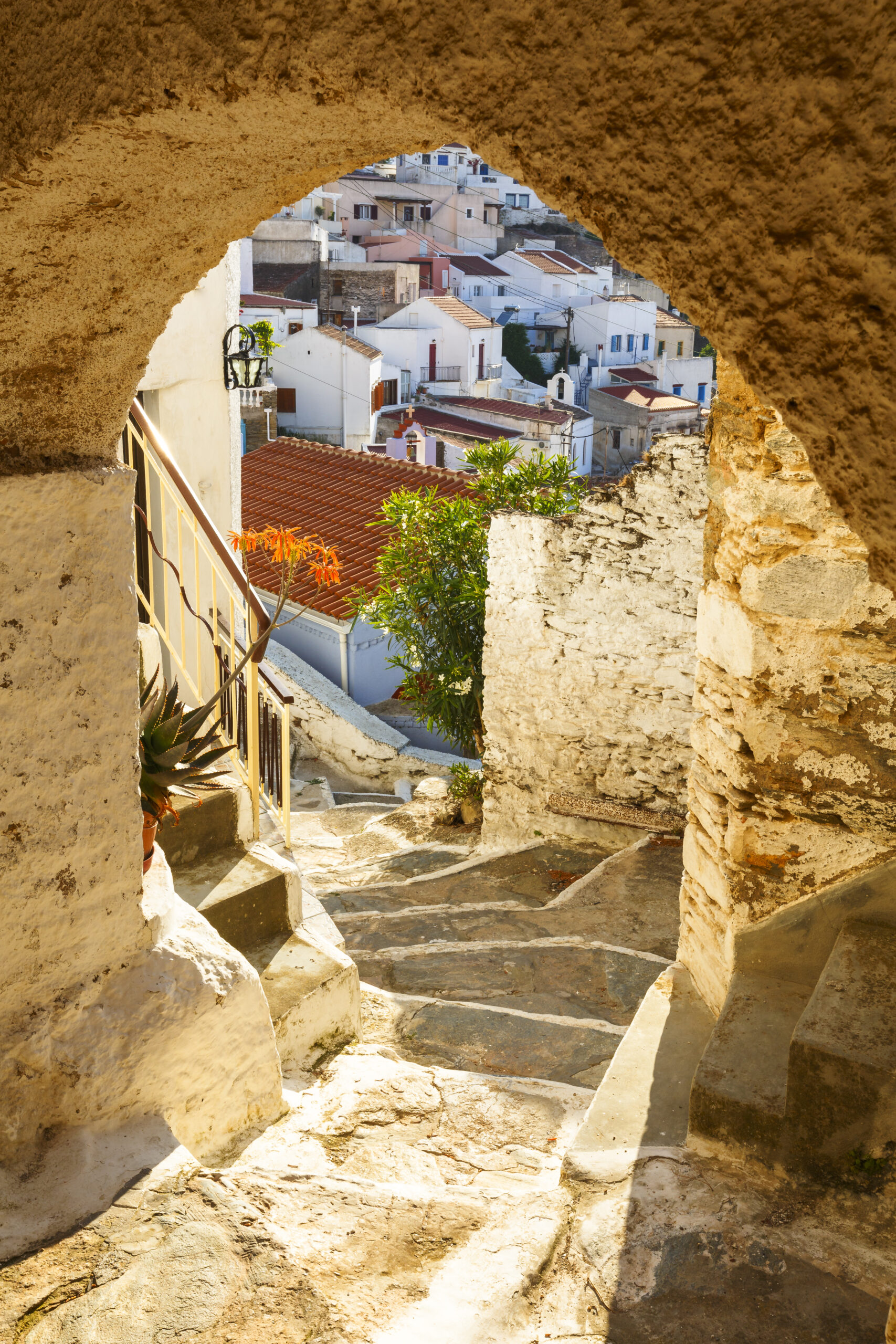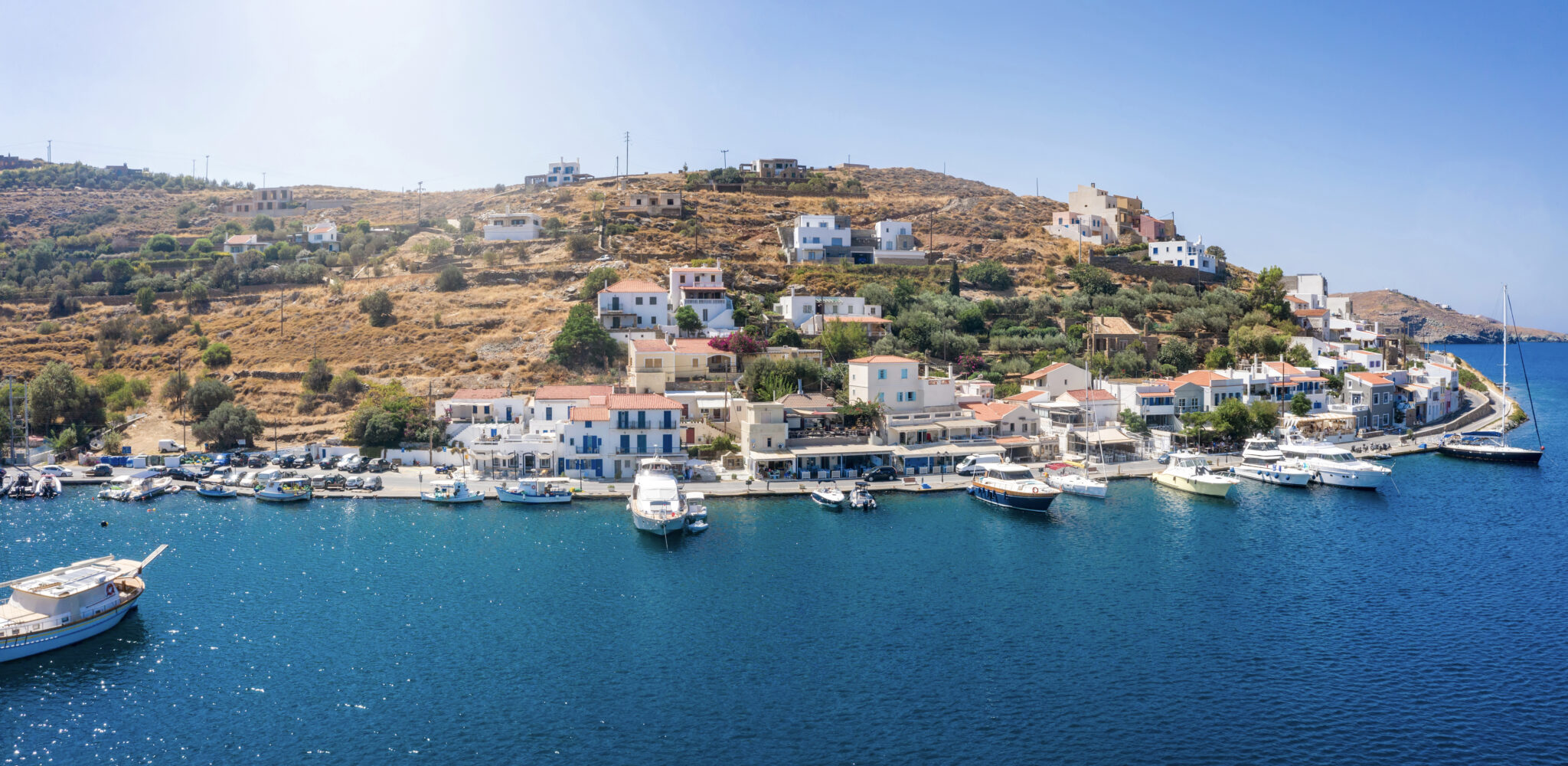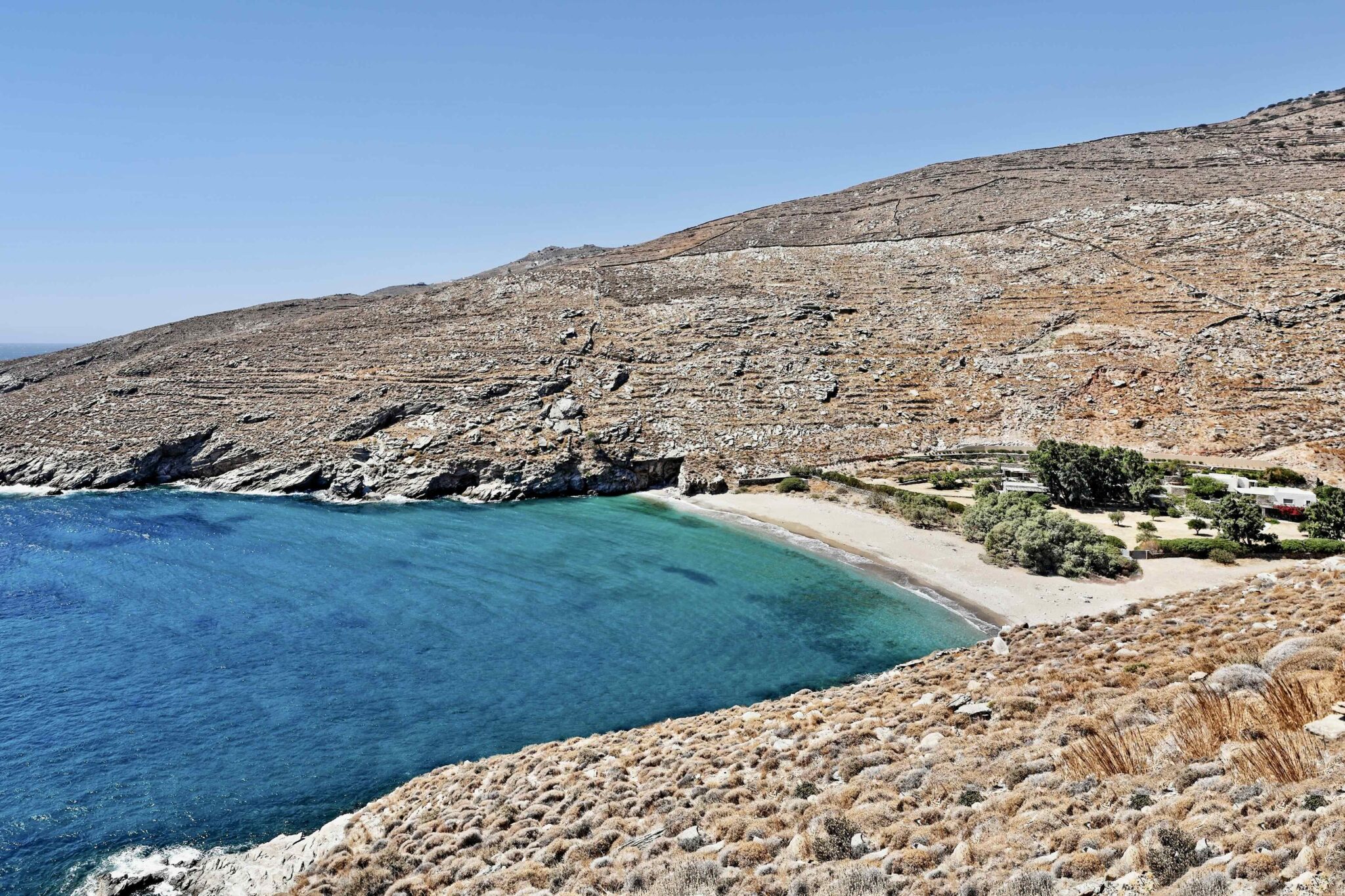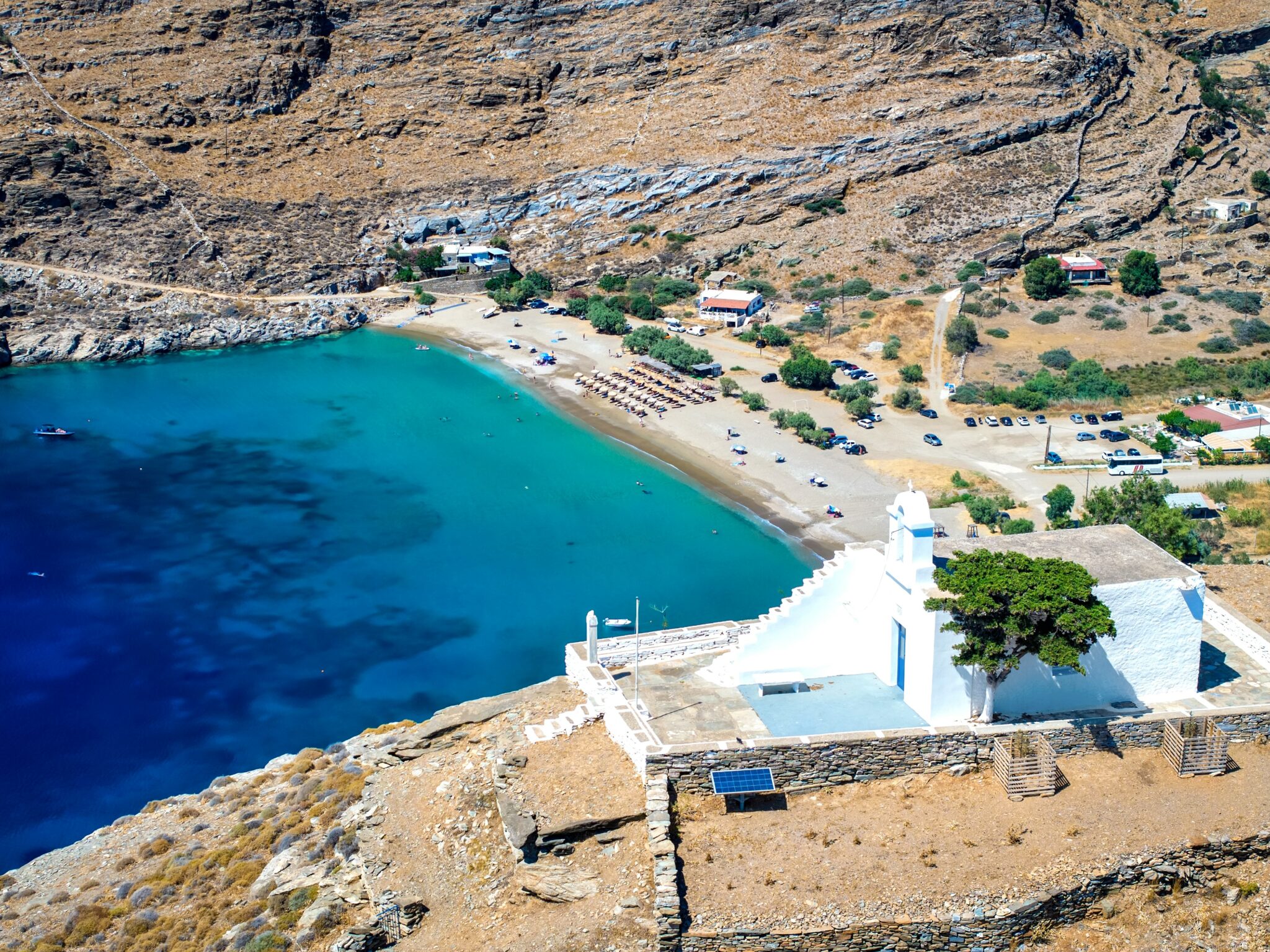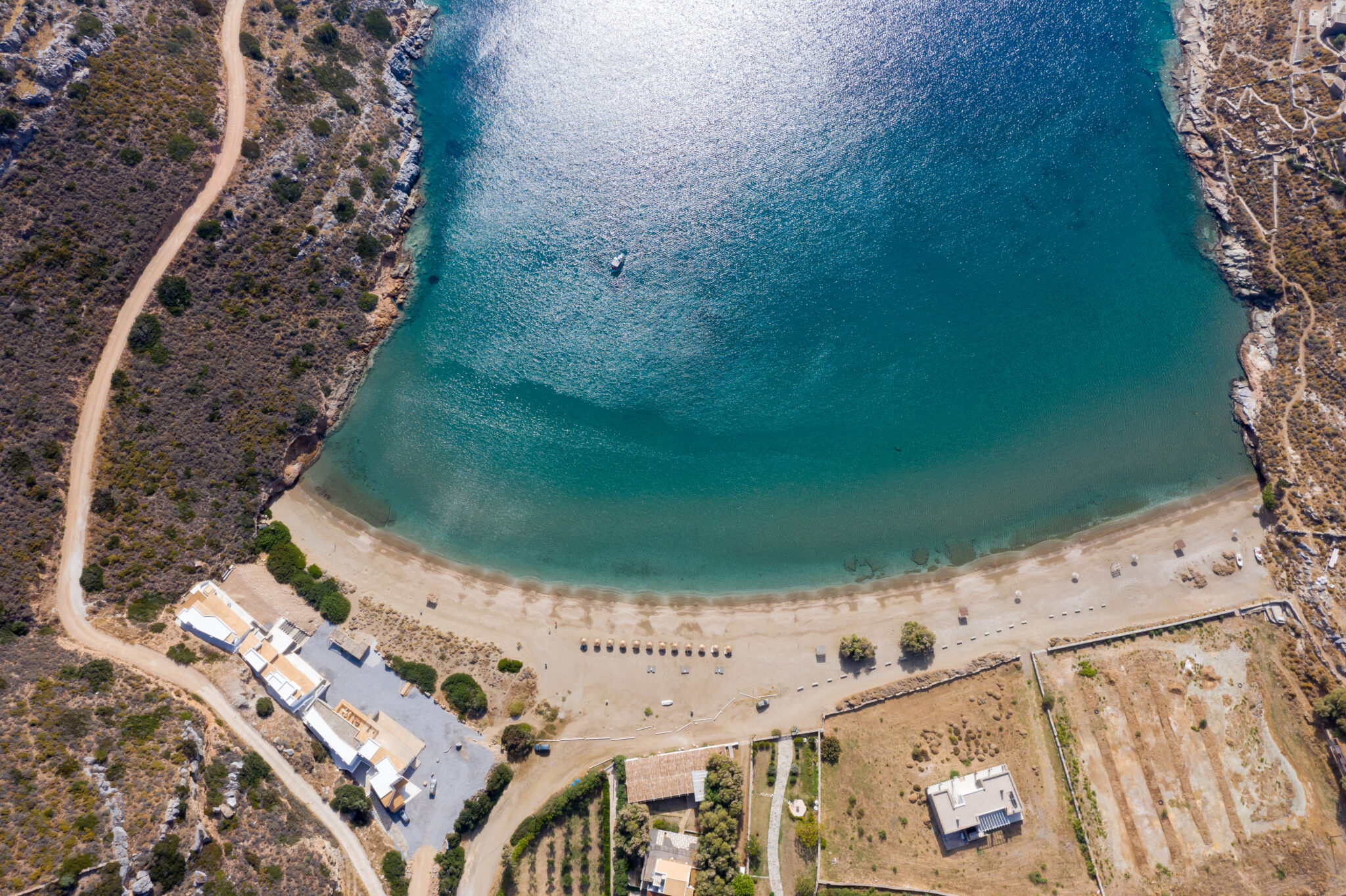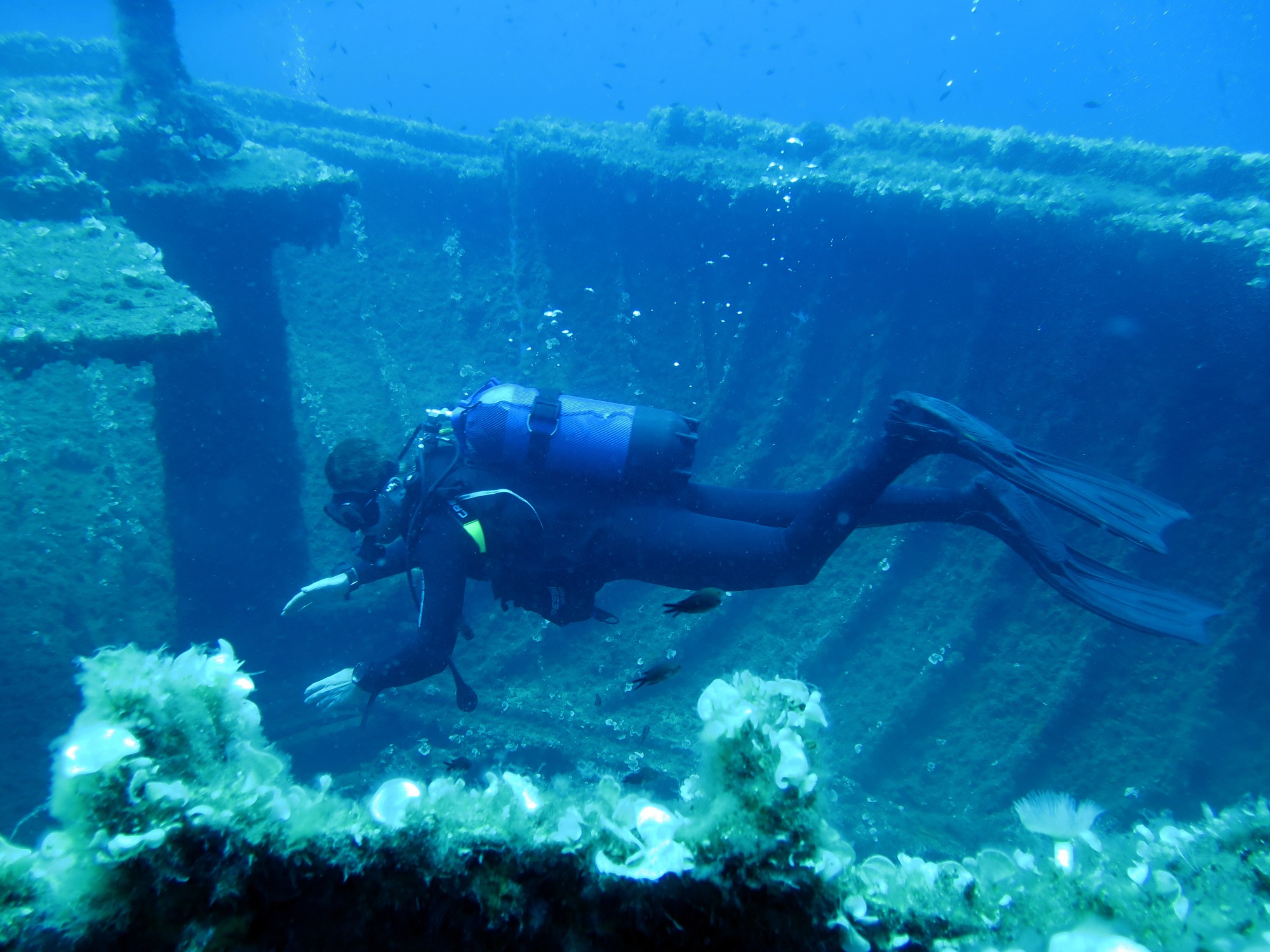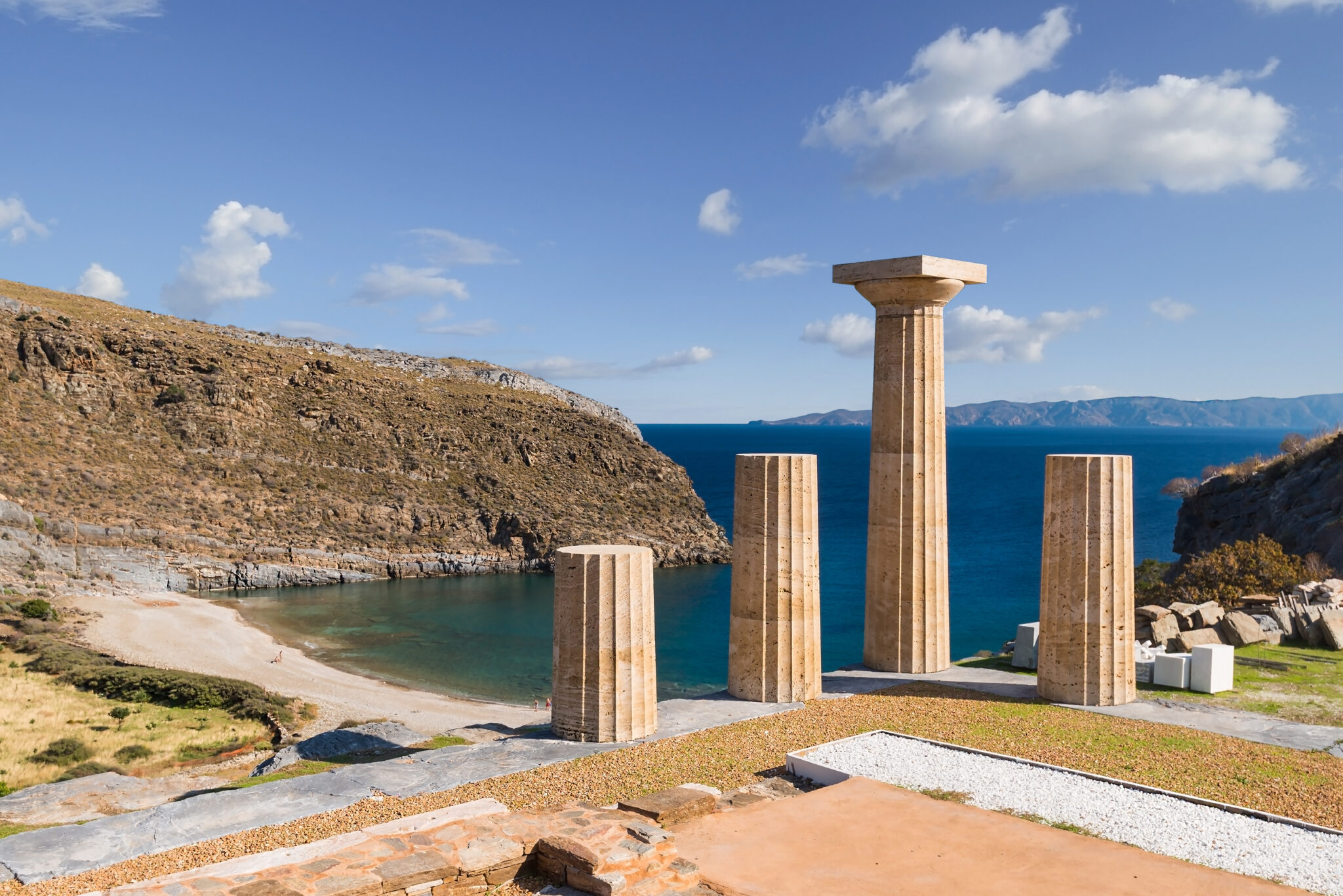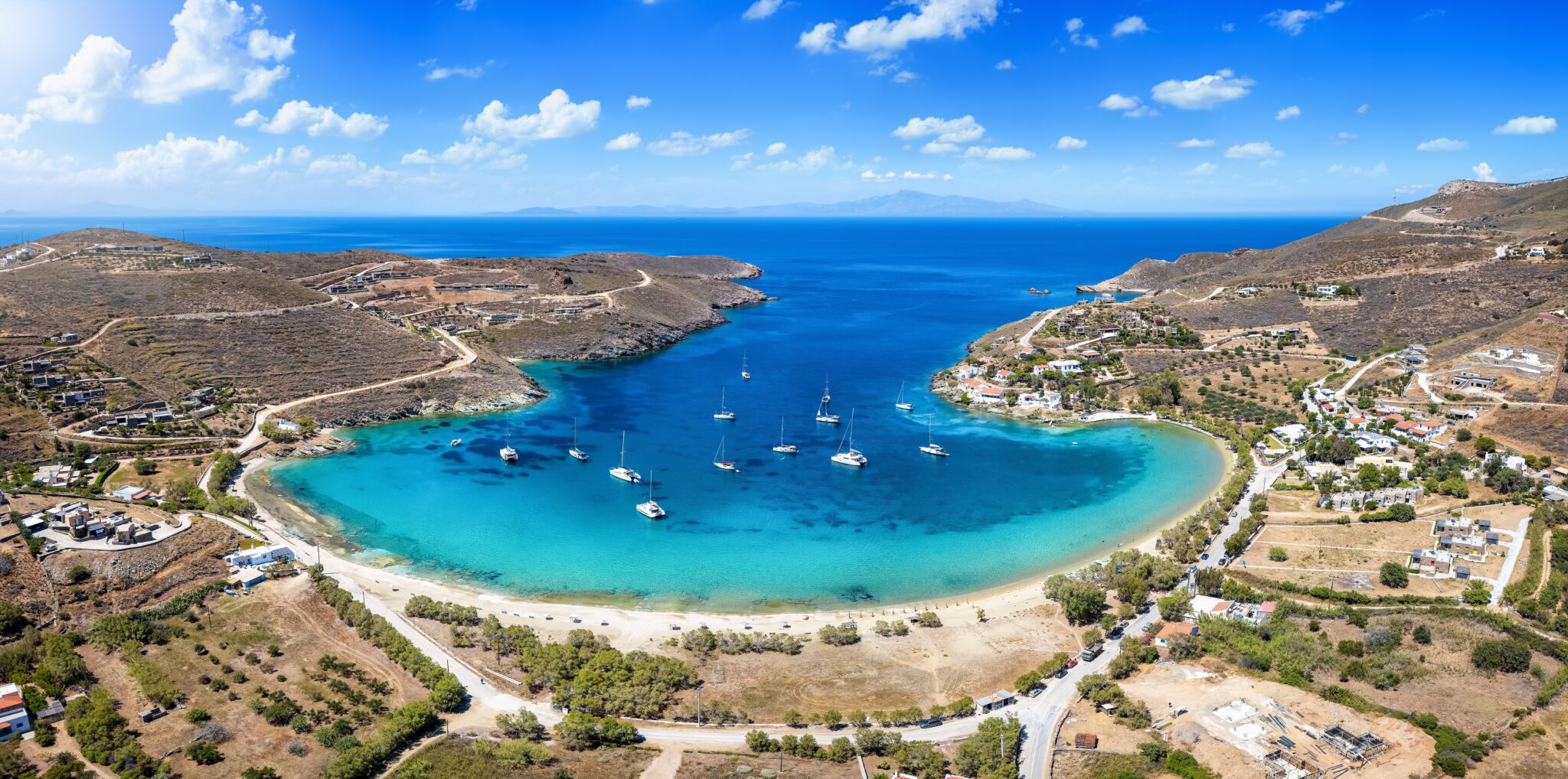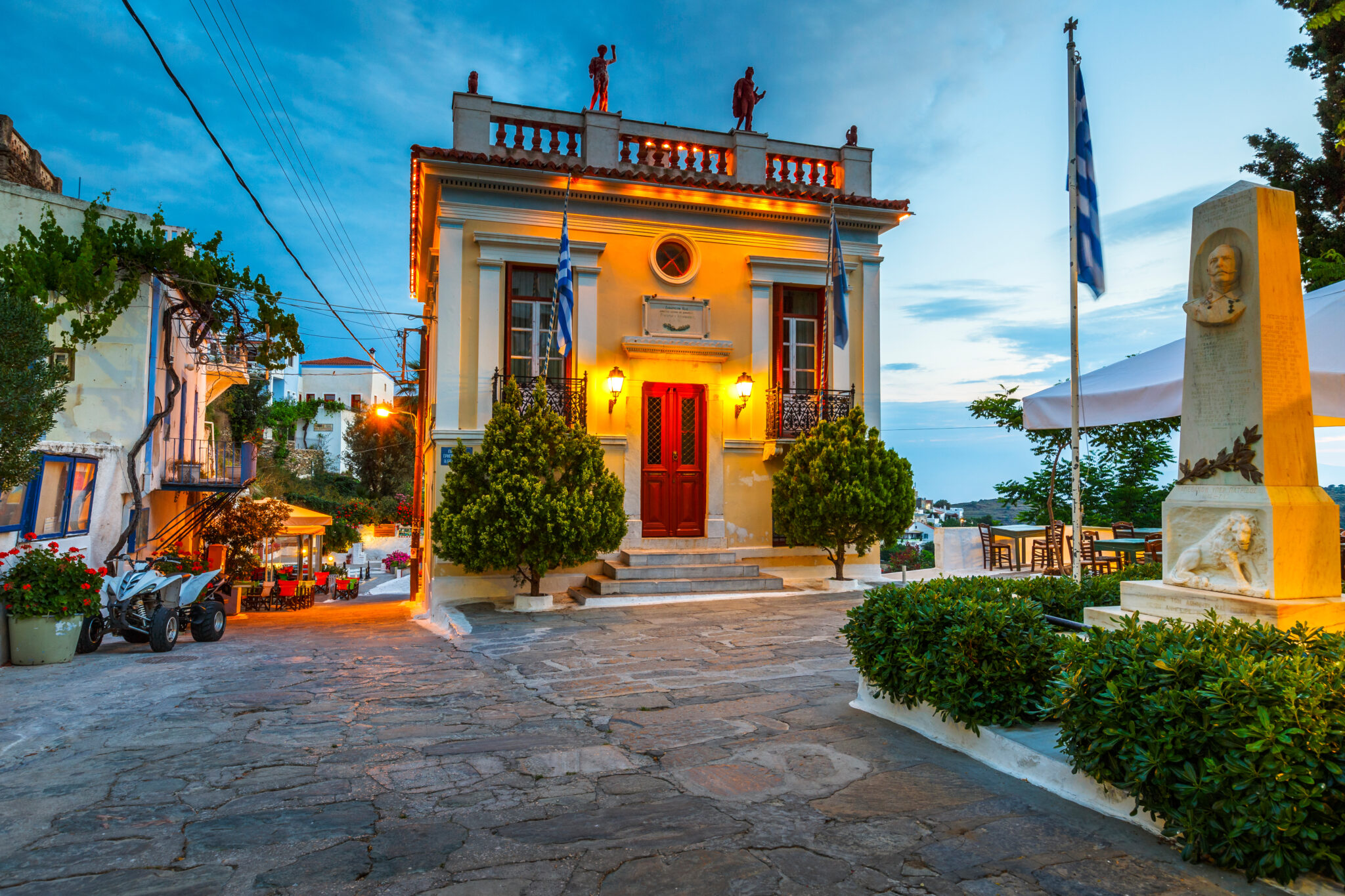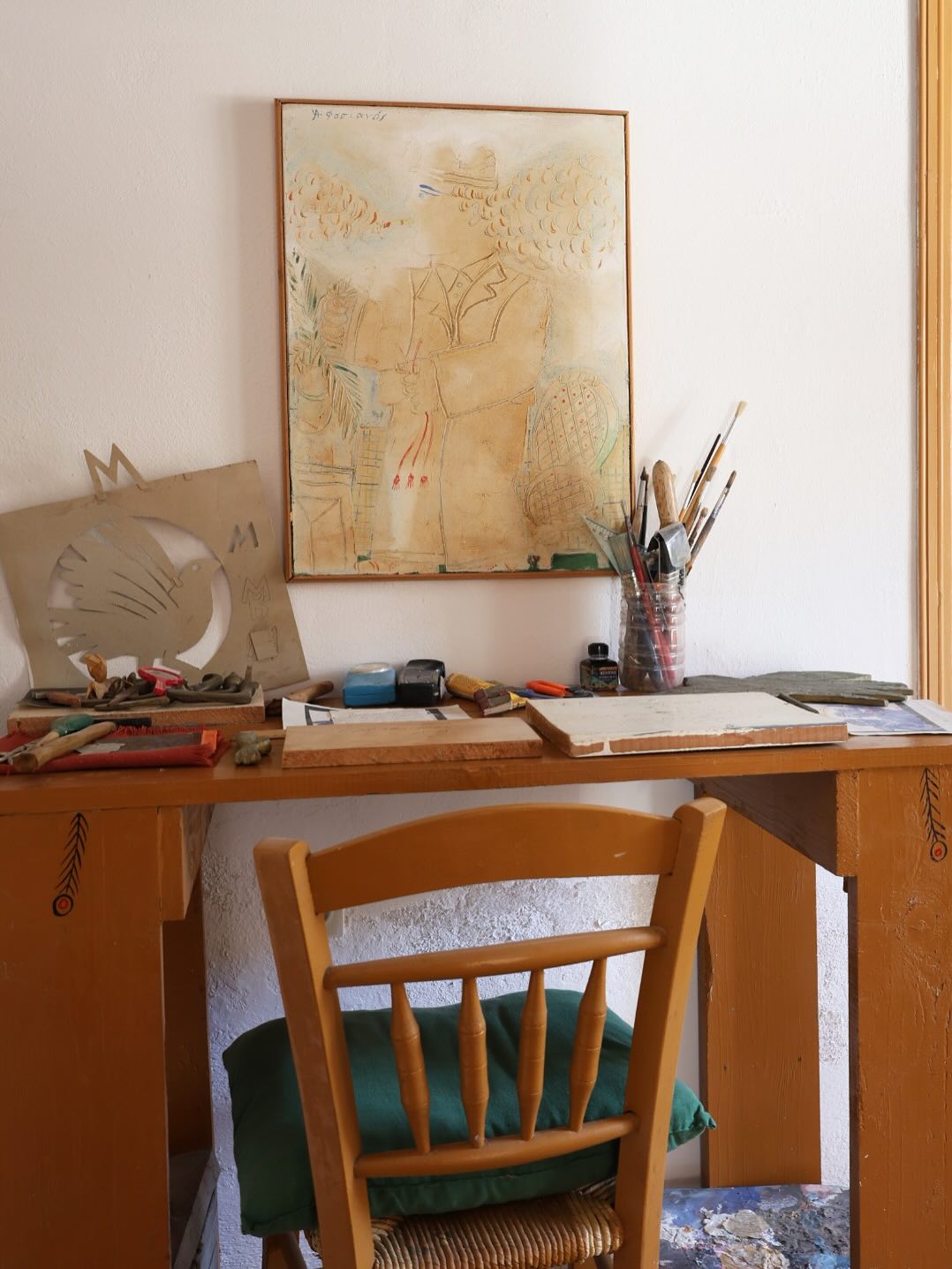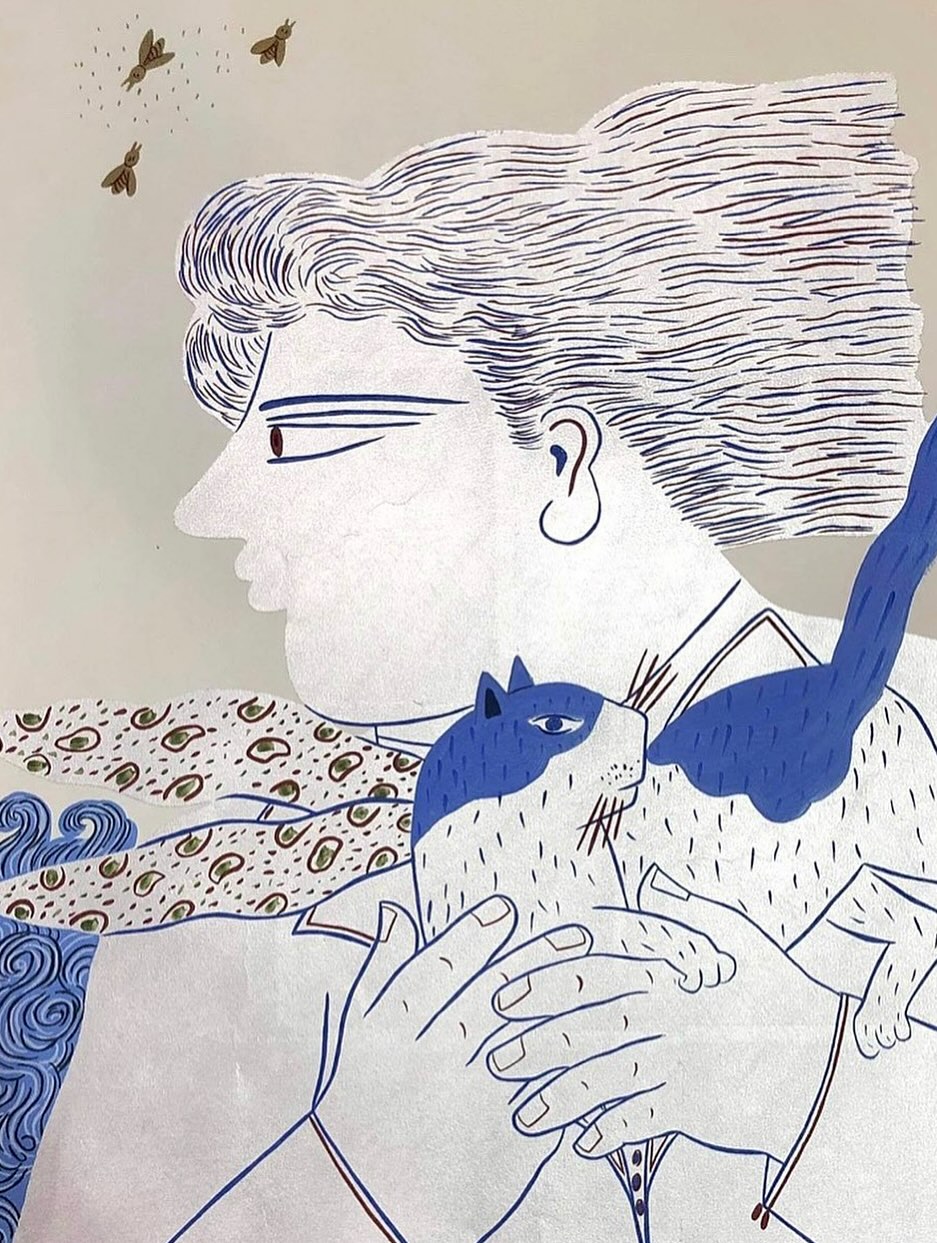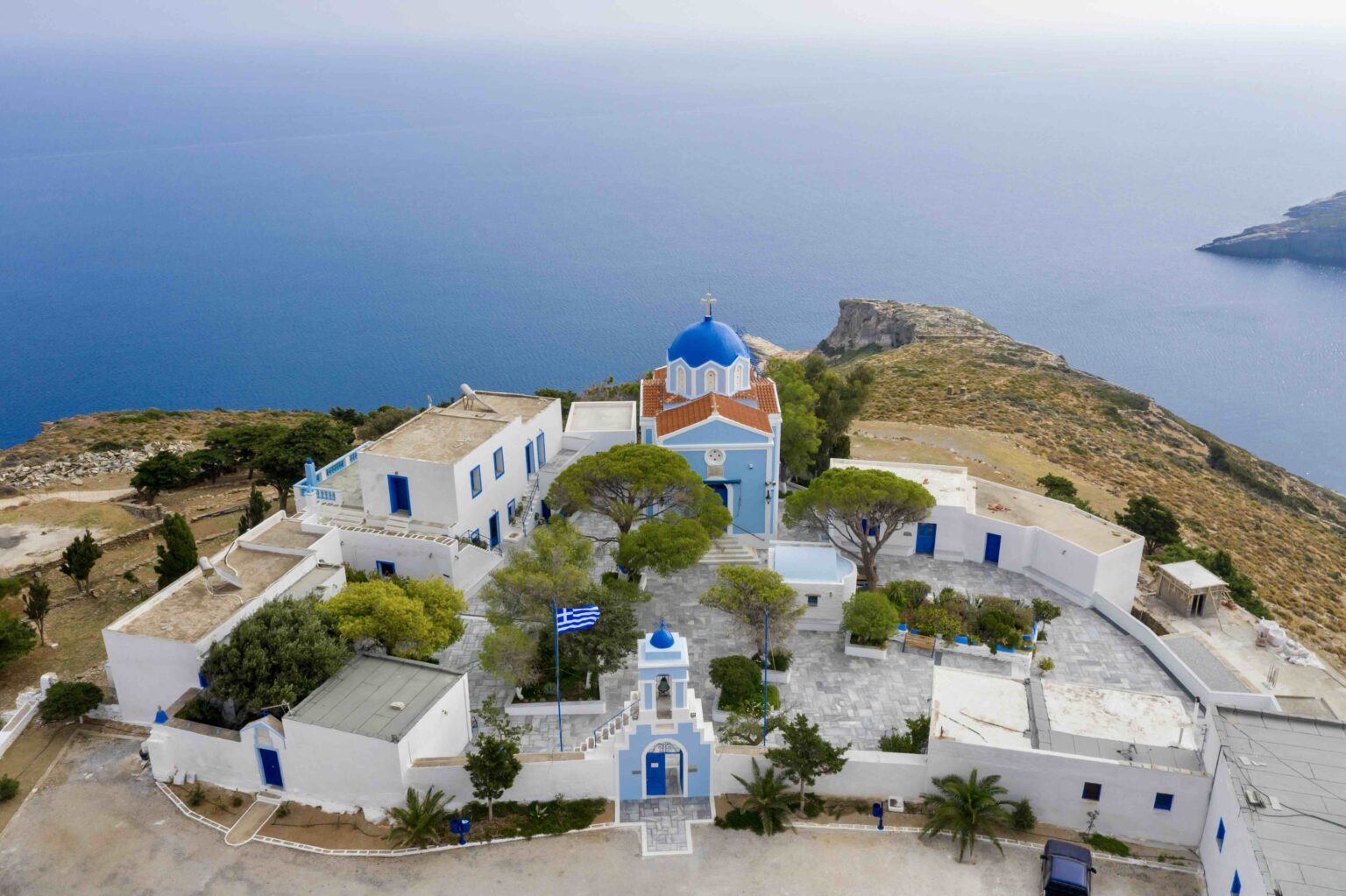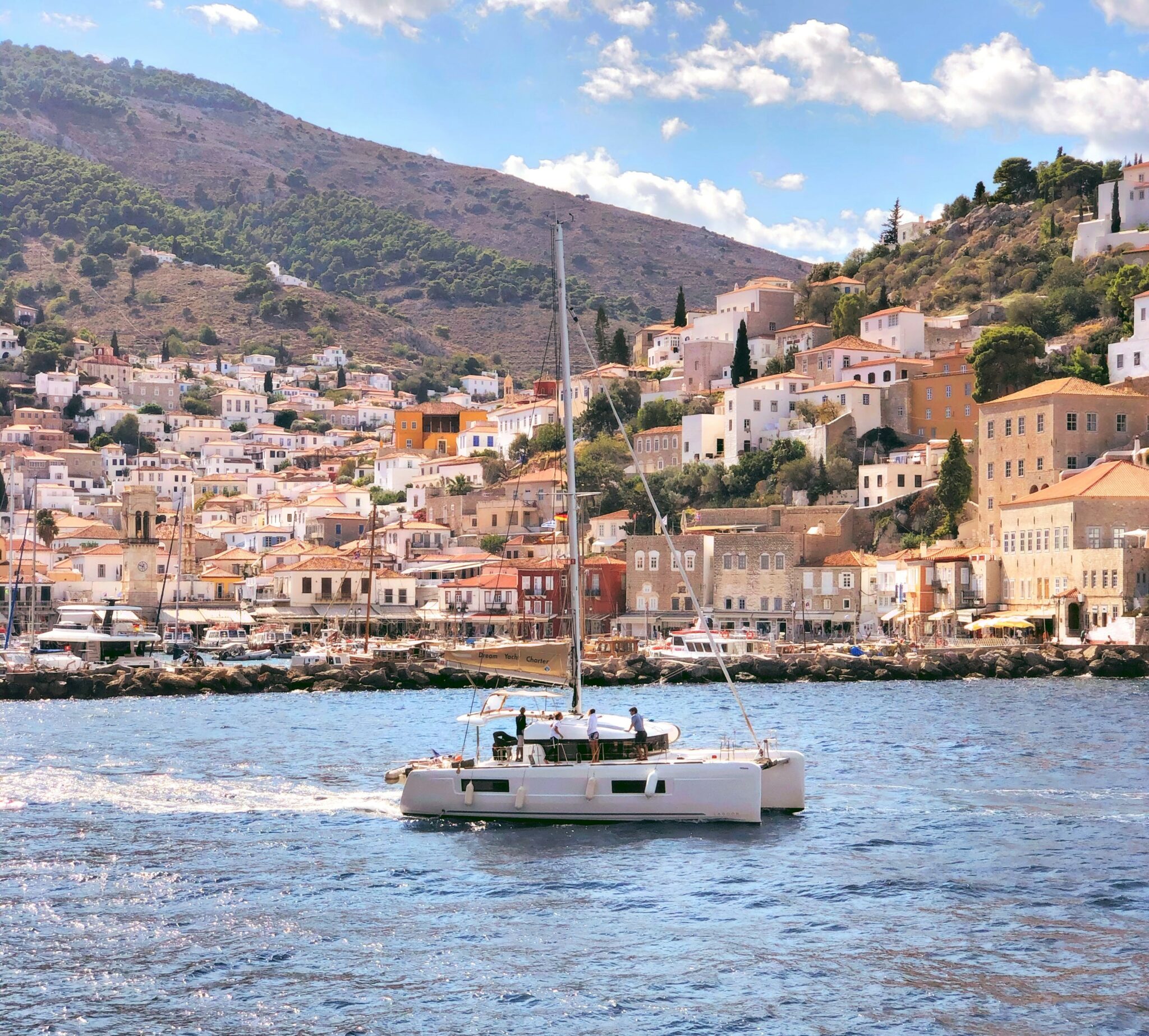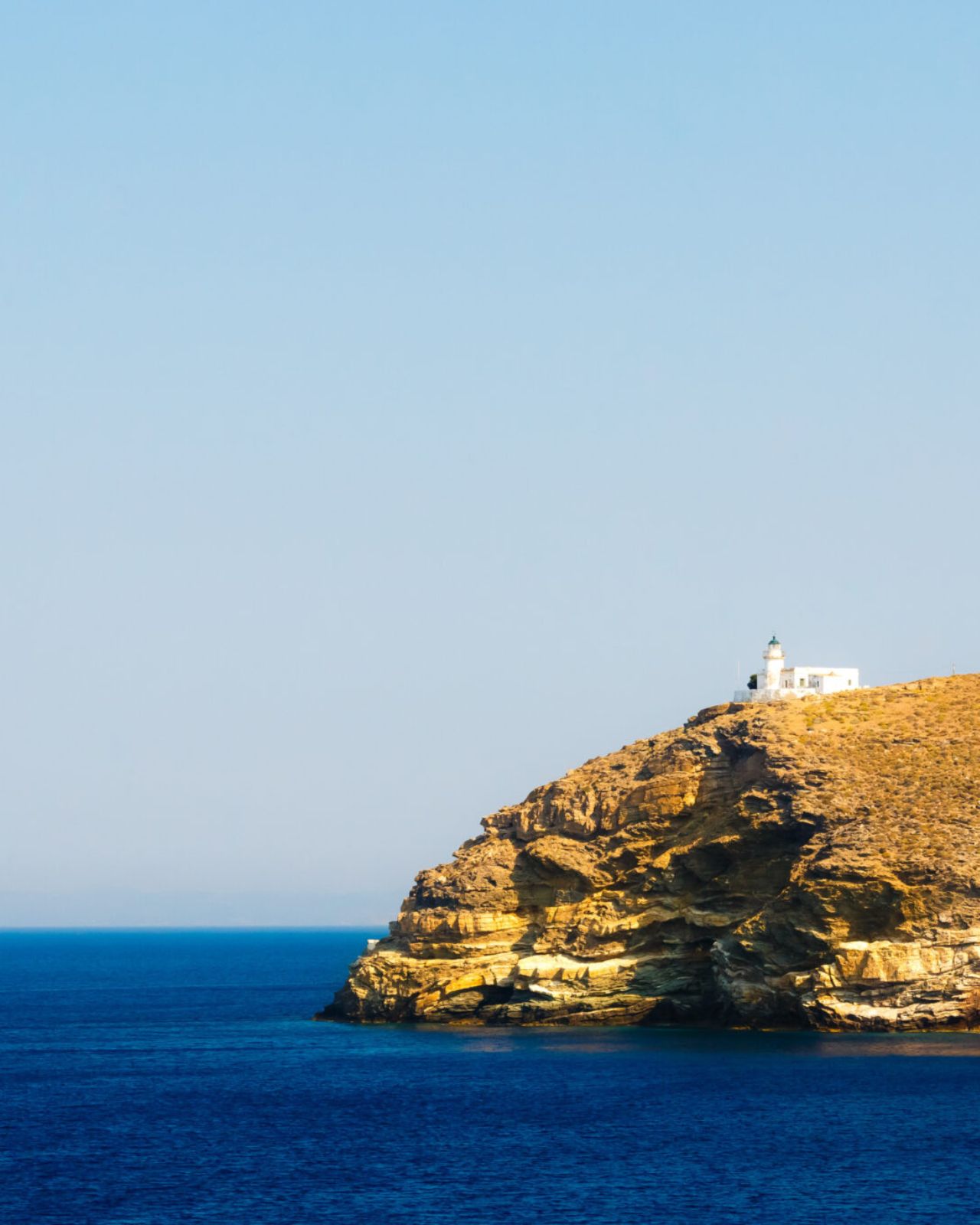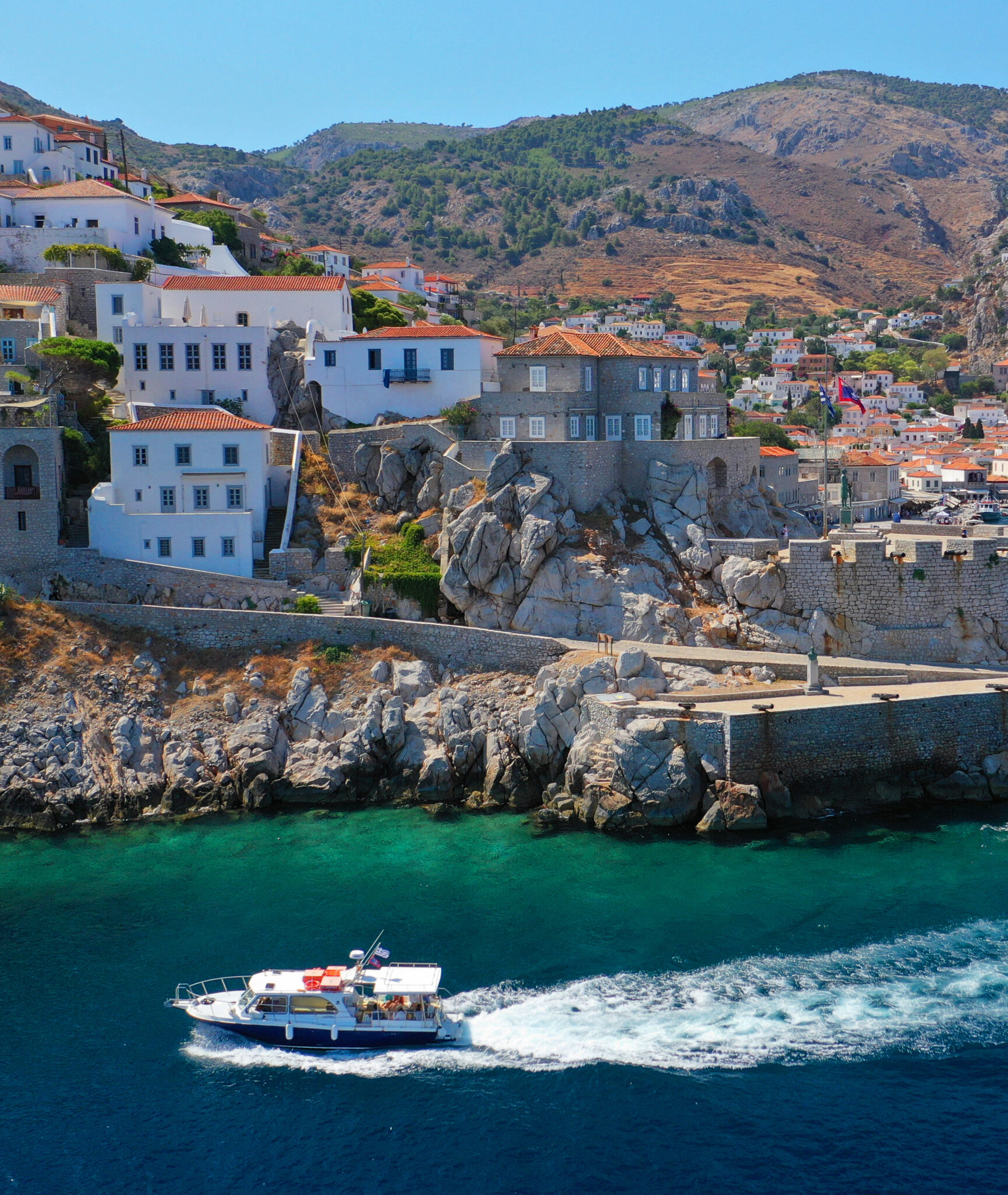The ferry slips out of Lavrio, and barely an hour later the dry, oak-dotted hills of Kea (or just Tzia) rise from the horizon. The island is the closest Cycladic escape to Athens, yet it feels worlds away: far quieter than Mykonos, wilder than Kythnos, with a rhythm that rewards those who take their time.
For years Kea has charmed travelers almost in secret, building its reputation softly, without the fireworks of mass tourism. You’ll be won over by the crystalline beaches and the austere beauty of its landscape, broken only by centuries-old oak groves. And then there’s the air of calm, the laid-back culture of its villages, and the sense that here the Aegean has been left to breathe in peace.
Chora and the Villages
Life begins in Korissia, the harbor where ferries unload their weekenders and yachts drop anchor. But Kea’s soul reveals itself in Ioulida, the island’s Chora, a cascade of whitewashed houses on the hillside, their rooftops climbing toward the ruins of a Venetian castle. Views sweep endlessly over the sea.
To the north, Otzias curves around a broad bay; to the west, Poisses and Koundouros promise sunsets and wide horizons. Vourkari, once a fishing village, now hums with the low-key glamour of sailboats and summer evenings. Beyond these hubs, narrow roads wind to hamlets where goats outnumber people and silence is the true luxury.
Shores of Contrast
Kea is blessed with beaches for every mood. For loungers and cocktails, try Yaliskari, Otzias, Spathi, or the western arc of Koundouros and Poisses. For the purists, there are strands with no umbrellas, no music—only the sound of waves.
Orekos, Sykamia, and the small coves beneath ancient Karthaia (reachable only on foot) are perfect for those who crave unspoiled horizons. In the west, Liparo, Kampi, and Lygia remain little-known. Some shores can only be reached by boat, a reminder that Kea still holds secrets.
Beneath the Waves
Few Aegean islands hold such a dramatic underwater history. Divers descend here to explore world-class wrecks: the HMHS Britannic, Titanic’s sister ship, which struck a German mine in 1916 and now lies at 120 meters; the ocean liner S/S Burdigala, sunk the same year; a German Junkers 52 plane resting on the seabed since 1943; and the 19th-century paddle steamer Patris, which went down off Koundouros in 1868. Each is a monument in steel and silence, history written in salt and rust.
Walking the Ancient Paths
Kea is also an island of trails, the kind that connect past and present with stone underfoot and sea views all around. The most iconic leads from Stavroudaki to the marble ruins of ancient Karthaia, once a proud city-state, now a hauntingly beautiful archaeological site above the waves.
Another route sets off from Ioulida, passes the island’s enigmatic Lion of Kea—a colossal stone beast with a knowing smile—and winds down to Otzias for a swim. These walks reveal the island’s dual nature: austere and tender, rugged yet deeply human.
Culture and Spirit
Kea’s cultural fabric is as rich as its landscape. In Ioulida, the Archaeological Museum showcases finds from the island’s storied past, while the neoclassical Town Hall designed by Ernst Ziller reflects the island’s 19th-century grandeur. Art lovers seek out the preserved atelier of Alekos Fassianos, a window into the great painter’s world.
In Vourkari, the prehistoric site of Agia Eirini speaks of a civilization that thrived here around 3000 BC, once among the most important cultural centers of the Aegean. For a more spiritual encounter, make the pilgrimage to Panagia Kastriani, a monastery built in 1700 on a cliff where, legend says, a miraculous icon was discovered. The views from here are both earthly and divine.



